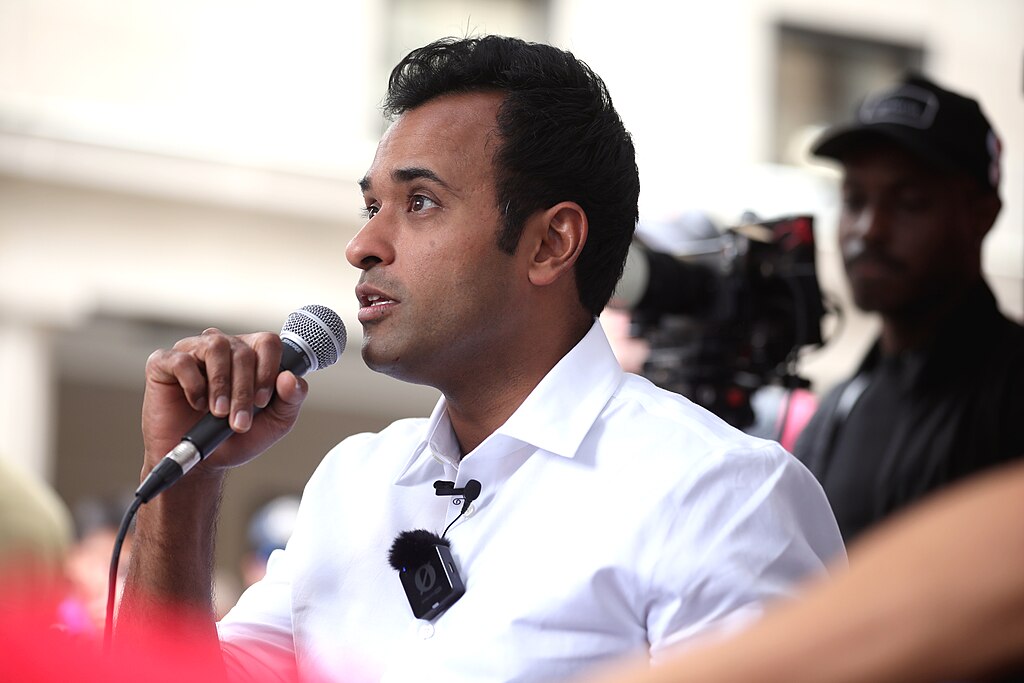Entrepreneur and former presidential candidate Vivek Ramaswamy is raising eyebrows with his latest proposal to implement sweeping reforms to the U.S. government, modeled after Argentine President Javier Milei’s dramatic cuts, but with what he describes as an intensified approach. Critics and supporters alike are locked in heated debate over the radical vision.
Ramaswamy’s approach, inspired by Milei’s libertarian ideology, promises to eliminate unnecessary bureaucracies, streamline agencies, and reduce federal overreach to an unprecedented degree. While he has long been an advocate of small government, this proposal signifies an aggressive pivot toward a minimalist federal structure, which he touts as the solution to America’s economic and administrative inefficiencies.
Speaking at a policy forum, Ramaswamy outlined his vision, calling for "bold, decisive action" to tackle what he termed “decades of bureaucratic bloat.” His proposed cuts span a range of departments and programs, targeting agencies he argues have overstepped their original mandates or become redundant due to state-level alternatives.
The Proposal: What’s on the Chopping Block?
Ramaswamy’s reform plan includes:
- Drastic Downsizing of Federal Agencies: Departments like Education and Commerce could see significant budget reductions or complete dissolution. He argues that education oversight is best left to state governments.
- Privatization and Deregulation: Ramaswamy proposes the privatization of non-essential federal functions and slashing regulations that hinder business growth, particularly in energy and technology.
- Tax Simplification: His plan includes reducing income tax brackets and eliminating certain corporate tax loopholes to create a more streamlined revenue system.
In addition to these changes, Ramaswamy is calling for greater fiscal accountability from government contractors, which he claims have contributed to “wasteful spending” in sectors such as defense and infrastructure.
Praise and Criticism
Ramaswamy’s bold agenda has drawn praise from libertarian and conservative circles, with proponents lauding his commitment to reducing the federal government’s footprint. They argue that his plan could spur economic growth, reduce the deficit, and restore power to state and local governments.
However, critics are sounding alarms over the potential fallout of such drastic measures. Progressive lawmakers and policy analysts have warned that scaling back federal agencies could erode vital programs, including those that address education disparities, healthcare access, and environmental protections. Some have labeled the proposal as “reckless,” accusing Ramaswamy of disregarding the broader societal impact of these cuts.
Economists remain divided on the long-term implications. While some agree that reducing government inefficiency could yield economic benefits, others caution that abrupt changes could destabilize critical sectors and leave vulnerable populations without a safety net.
A Comparison to Milei
Javier Milei’s libertarian reforms in Argentina, which Ramaswamy credits as an inspiration, have been a polarizing topic. Milei’s policies include the elimination of entire ministries and a push toward dollarization, which have sparked both optimism and apprehension. Ramaswamy’s approach differs in its focus on American federalism but retains the same spirit of aggressive reform.
What’s Next?
Ramaswamy’s proposal has ignited a fierce political debate, setting the stage for potential legislative battles should his vision gain traction among lawmakers. For now, the entrepreneur-turned-politician continues to rally support for what he describes as a once-in-a-generation opportunity to reimagine the U.S. government.



 Trump and Lula Discuss Trade, Sanctions, and Security in “Productive” Phone Call
Trump and Lula Discuss Trade, Sanctions, and Security in “Productive” Phone Call  IMF Deputy Dan Katz Visits China as Key Economic Review Nears
IMF Deputy Dan Katz Visits China as Key Economic Review Nears  Trump Administration Tightens H-1B Visa Vetting With New Focus on Free Speech and Censorship
Trump Administration Tightens H-1B Visa Vetting With New Focus on Free Speech and Censorship  UN Chief Says Gaza Operation “Fundamentally Wrong” as Concerns Over War Crimes Grow
UN Chief Says Gaza Operation “Fundamentally Wrong” as Concerns Over War Crimes Grow  Taiwan Opposition Criticizes Plan to Block Chinese App Rednote Over Security Concerns
Taiwan Opposition Criticizes Plan to Block Chinese App Rednote Over Security Concerns  Pentagon Probe Finds Hegseth’s Use of Signal Risked Exposing Sensitive Yemen Strike Details
Pentagon Probe Finds Hegseth’s Use of Signal Risked Exposing Sensitive Yemen Strike Details  Trump Administration Halts Immigration, Green Card, and Citizenship Processing for 19 Countries
Trump Administration Halts Immigration, Green Card, and Citizenship Processing for 19 Countries  U.S. Repatriation Flight Carrying 266 Venezuelan Migrants Lands in Caracas
U.S. Repatriation Flight Carrying 266 Venezuelan Migrants Lands in Caracas  Trump Claims He Will Void Biden Documents Signed with Autopen
Trump Claims He Will Void Biden Documents Signed with Autopen  California Launches Portal for Reporting Alleged Misconduct by Federal Immigration Agents
California Launches Portal for Reporting Alleged Misconduct by Federal Immigration Agents  Australia and Japan Strengthen Defence Cooperation Amid Rising Regional Tensions
Australia and Japan Strengthen Defence Cooperation Amid Rising Regional Tensions  Cuba Reaffirms Anti-Drug Cooperation as Tensions Rise in the Caribbean
Cuba Reaffirms Anti-Drug Cooperation as Tensions Rise in the Caribbean  UN General Assembly Demands Russia Return Ukrainian Children Amid Ongoing Conflict
UN General Assembly Demands Russia Return Ukrainian Children Amid Ongoing Conflict  Taiwan Signals Openness to Renew Ties with Honduras as Election Unfolds
Taiwan Signals Openness to Renew Ties with Honduras as Election Unfolds  Drones Spotted Near Zelenskiy’s Flight Path in Ireland Trigger Security Alert
Drones Spotted Near Zelenskiy’s Flight Path in Ireland Trigger Security Alert  Hong Kong Faces Low Turnout in “Patriots-Only” Election Amid Public Grief After Deadly Fire
Hong Kong Faces Low Turnout in “Patriots-Only” Election Amid Public Grief After Deadly Fire 































